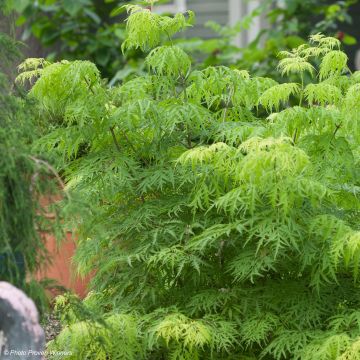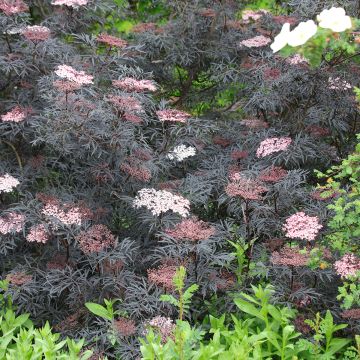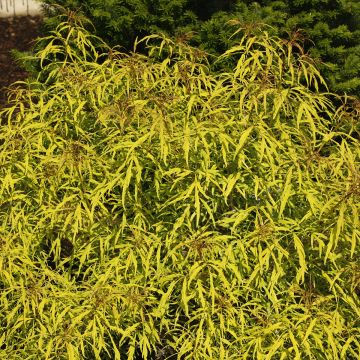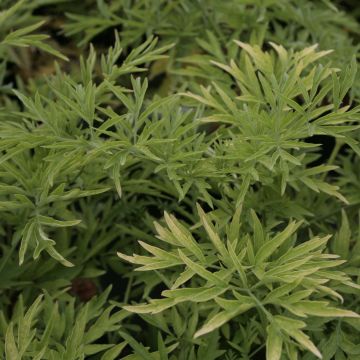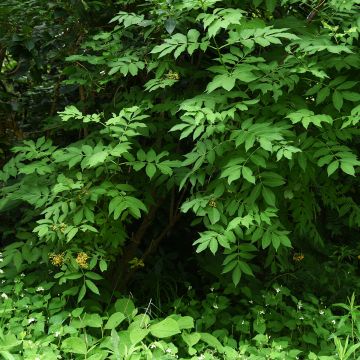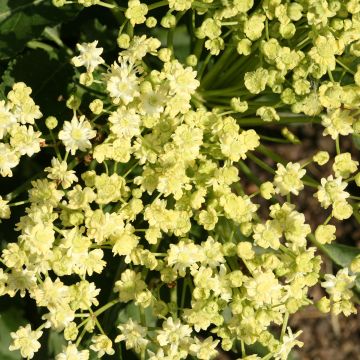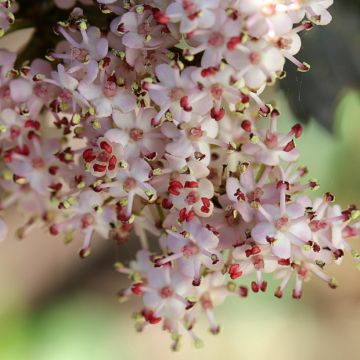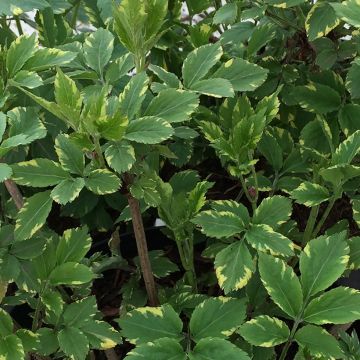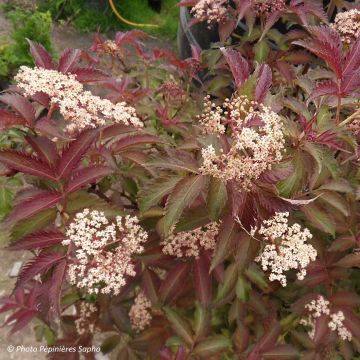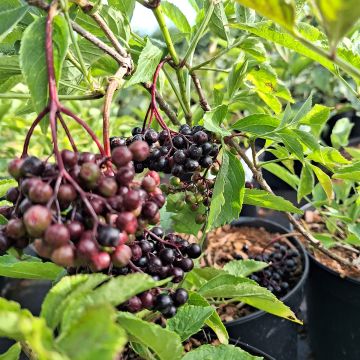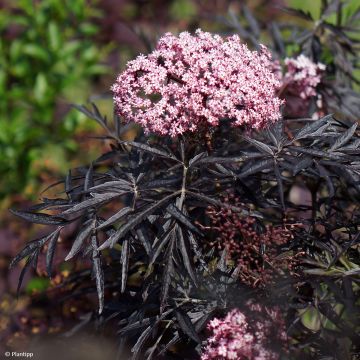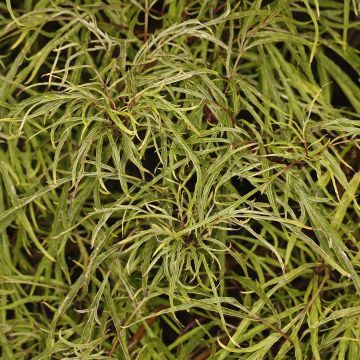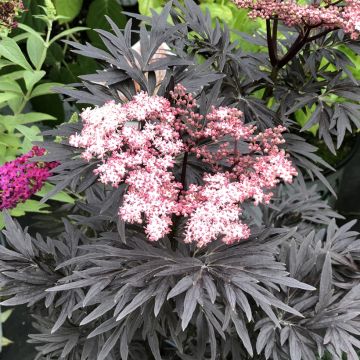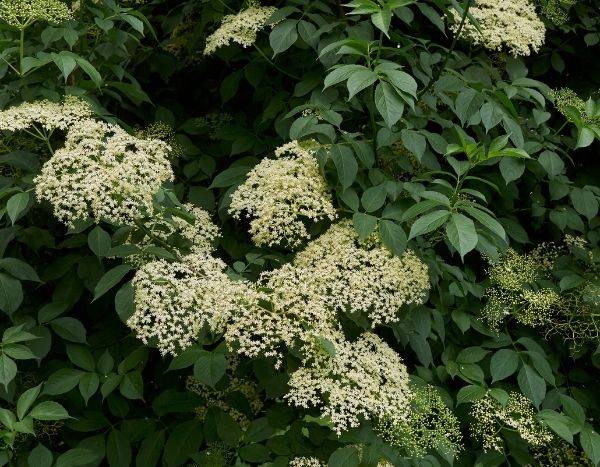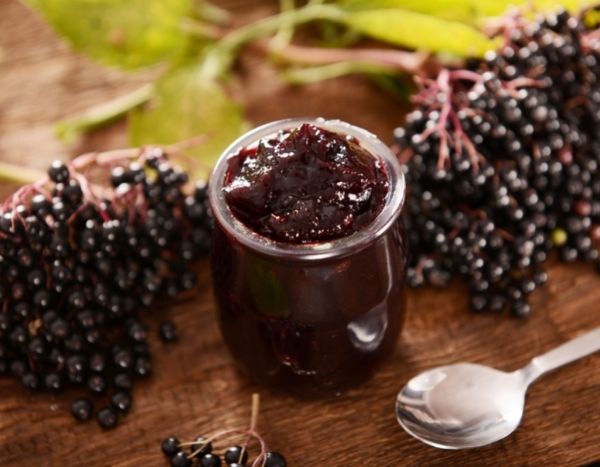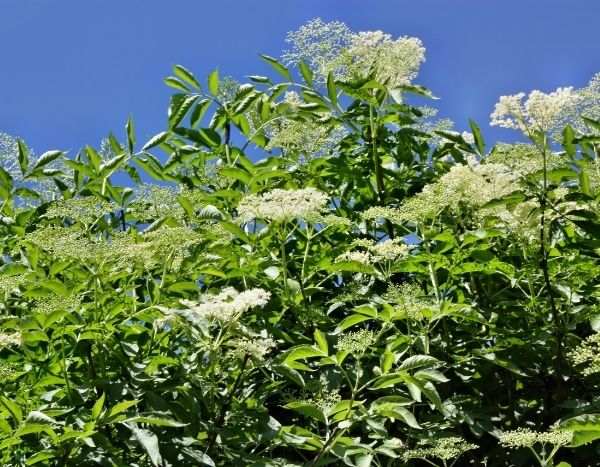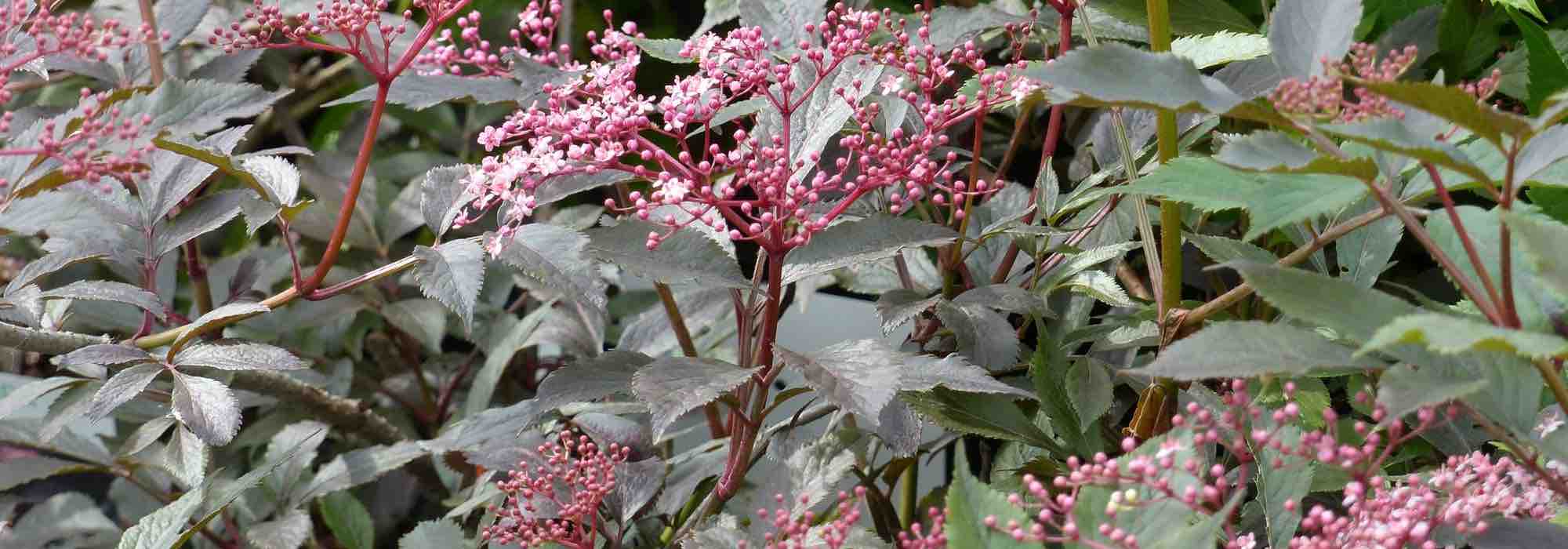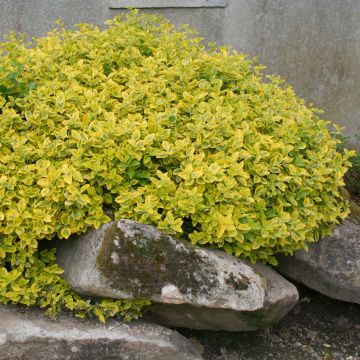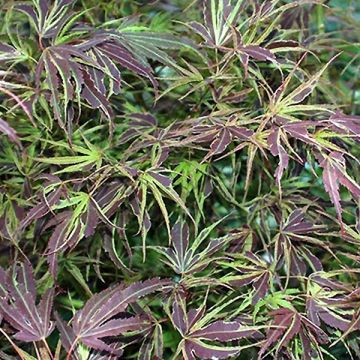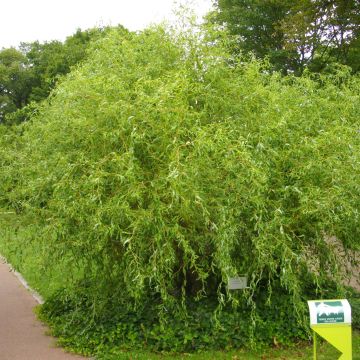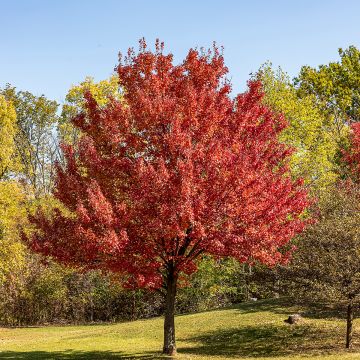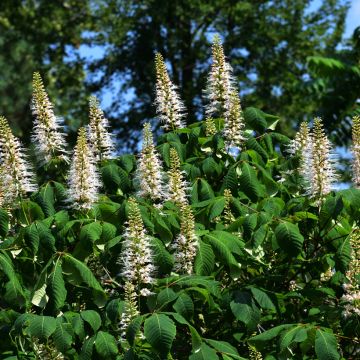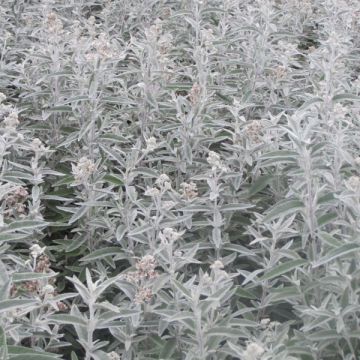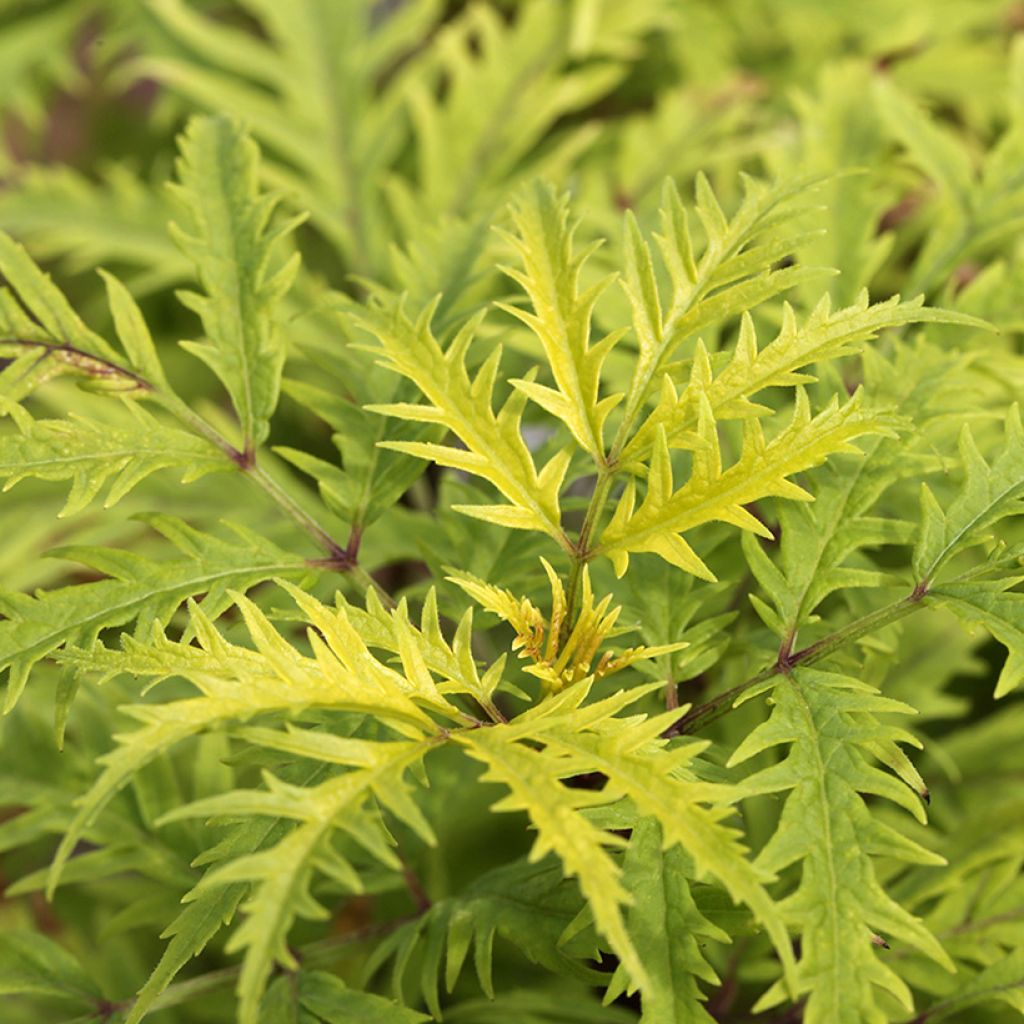

Sureau à grappes - Sambucus racemosa Golden Lace
View more pictures
Hide images
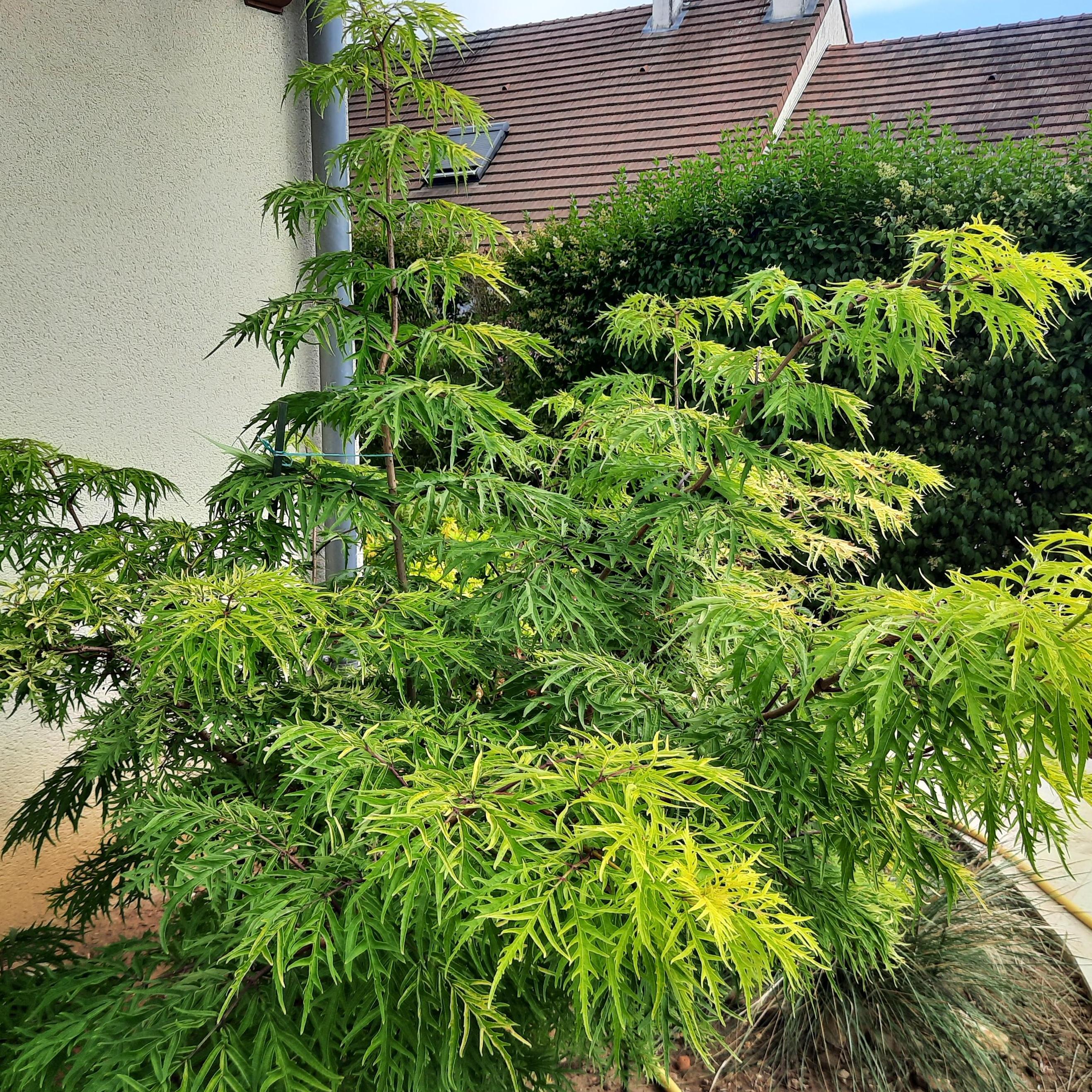
Colette A.

Colette A. • 72 FR
Sambucus racemosa Golden Lace - European Red Elder
Sambucus racemosa Golden Lace 'KOJUSRG'
European Red Elder, Red Elderberry, Red-berried Elder
Special offer!
Receive a €20 voucher for any order over €90 (excluding delivery costs, credit notes, and plastic-free options)!
1- Add your favorite plants to your cart.
2- Once you have reached €90, confirm your order (you can even choose the delivery date!).
3- As soon as your order is shipped, you will receive an email containing your voucher code, valid for 3 months (90 days).
Your voucher is unique and can only be used once, for any order with a minimum value of €20, excluding delivery costs.
Can be combined with other current offers, non-divisible and non-refundable.
Why not try an alternative variety in stock?
View all →This plant carries a 24 months recovery warranty
More information
We guarantee the quality of our plants for a full growing cycle, and will replace at our expense any plant that fails to recover under normal climatic and planting conditions.
Would this plant suit my garden?
Set up your Plantfit profile →
Description
Sambucus racemosa Golden Lace is a small bushy elderberry that stands out for its graceful foliage, which is bright yellow in spring. The flowering in white, honey-scented umbels takes place in mid-spring. The flowers give way to clusters of berries that turn scarlet when ripe in late summer. Very colourful and not too bulky, this elderberry is easy to incorporate into any garden, even the smallest ones. It thrives in any garden soil that is not too compact and not too dry in summer.
A very hardy wild species widespread in Europe, North Africa, and as far as Asia Minor, the Sambucus racemosa, or mountain elder, is a deciduous bush of the Caprifoliaceae family, like honeysuckles, weigelas, and valerians.
The Golden Lace elderberry 'KOJUSRG' is a Canadian horticultural variety, sometimes marketed under the name 'Morden Golden Glow'. It is distinguished from the typical species by its smaller size and original foliage, beautifully architectural and colourful. The plant has a bushy habit, flexible branches, and forms a feathery, airy mass, up to 1.50 m (5ft) high and wide at the most. This graceful habit, and the branches covered with distinctly yellow feathery foliage in spring, are the charm of this bush. Its growth is quite fast. The deciduous leaves, opposite and compound, with finely incised leaflets and toothed edges, are red-bronze when they bud, become bright yellow, and then turn green in summer. Honey-scented, its flowering occurs in May-June depending on the climate. It takes the form of conical panicles composed of small star-shaped creamy white flowers that appear at the ends of the stems. After pollination clusters of small round berries, tightly packed together, are formed. Highly decorative in late season, they are a bright red and stand out beautifully against the yellow autumn foliage. These fruits are a delight for birds.
The 'Golden Lace' Elderberry is a gem for small gardens or a terrace. Place it in the centre or foreground of a bed of smaller shrubs, or near an entrance or window, or alongside a path. You can also keep it in a large pot or container for many years by regularly pruning it to limit its growth. Combine it with dark foliage plants (Physocarpus, Prunus, Berberis, Sambucus nigra Black Lace), Stanwell Perpetual roses, or a creeping ceanothus with blue spring flowers. It will enhance the autumn colours of deciduous euonymus, Cotinus, Hydrangea quercifolia, or Parrotia persica.
In the garden: Elderberry leaves are known to accelerate compost decomposition. A black elderberry leaf infusion is useful in organic gardening to combat mildew and aphid or rodent attacks: soak 1 kg of leaves in 10 liters of water for a few days, then spray carefully. It can also be planted in an orchard, where it attracts insect-eating birds.
Plant habit
Flowering
Foliage
Botanical data
Sambucus
racemosa
Golden Lace 'KOJUSRG'
Viburnaceae (Adoxaceae)
European Red Elder, Red Elderberry, Red-berried Elder
Cultivar or hybrid
Other Sambucus - Elder tree
View all →Planting and care
Sambucus racemosa Golden Lace can be planted in spring or autumn in partial shade or non-scorching sunlight. Place it in ordinary, even alkaline soil, that is well loosened and rich in humus. Easy to grow and undemanding, it requires little maintenance. In April-May, before flowering, prune the dead or diseased wood and branches that compromise the symmetry of the bush, keeping only the vigorous branches. The Sambucus can tolerate hard pruning but maintain a minimum of old branches, as flowering will take place on the unpruned branches.
Planting period
Intended location
Care
Planting & care advice
This item has not been reviewed yet - be the first to leave a review about it.
Similar products
Haven't found what you were looking for?
Hardiness is the lowest winter temperature a plant can endure without suffering serious damage or even dying. However, hardiness is affected by location (a sheltered area, such as a patio), protection (winter cover) and soil type (hardiness is improved by well-drained soil).

Photo Sharing Terms & Conditions
In order to encourage gardeners to interact and share their experiences, Promesse de fleurs offers various media enabling content to be uploaded onto its Site - in particular via the ‘Photo sharing’ module.
The User agrees to refrain from:
- Posting any content that is illegal, prejudicial, insulting, racist, inciteful to hatred, revisionist, contrary to public decency, that infringes on privacy or on the privacy rights of third parties, in particular the publicity rights of persons and goods, intellectual property rights, or the right to privacy.
- Submitting content on behalf of a third party;
- Impersonate the identity of a third party and/or publish any personal information about a third party;
In general, the User undertakes to refrain from any unethical behaviour.
All Content (in particular text, comments, files, images, photos, videos, creative works, etc.), which may be subject to property or intellectual property rights, image or other private rights, shall remain the property of the User, subject to the limited rights granted by the terms of the licence granted by Promesse de fleurs as stated below. Users are at liberty to publish or not to publish such Content on the Site, notably via the ‘Photo Sharing’ facility, and accept that this Content shall be made public and freely accessible, notably on the Internet.
Users further acknowledge, undertake to have ,and guarantee that they hold all necessary rights and permissions to publish such material on the Site, in particular with regard to the legislation in force pertaining to any privacy, property, intellectual property, image, or contractual rights, or rights of any other nature. By publishing such Content on the Site, Users acknowledge accepting full liability as publishers of the Content within the meaning of the law, and grant Promesse de fleurs, free of charge, an inclusive, worldwide licence for the said Content for the entire duration of its publication, including all reproduction, representation, up/downloading, displaying, performing, transmission, and storage rights.
Users also grant permission for their name to be linked to the Content and accept that this link may not always be made available.
By engaging in posting material, Users consent to their Content becoming automatically accessible on the Internet, in particular on other sites and/or blogs and/or web pages of the Promesse de fleurs site, including in particular social pages and the Promesse de fleurs catalogue.
Users may secure the removal of entrusted content free of charge by issuing a simple request via our contact form.
The flowering period indicated on our website applies to countries and regions located in USDA zone 8 (France, the United Kingdom, Ireland, the Netherlands, etc.)
It will vary according to where you live:
- In zones 9 to 10 (Italy, Spain, Greece, etc.), flowering will occur about 2 to 4 weeks earlier.
- In zones 6 to 7 (Germany, Poland, Slovenia, and lower mountainous regions), flowering will be delayed by 2 to 3 weeks.
- In zone 5 (Central Europe, Scandinavia), blooming will be delayed by 3 to 5 weeks.
In temperate climates, pruning of spring-flowering shrubs (forsythia, spireas, etc.) should be done just after flowering.
Pruning of summer-flowering shrubs (Indian Lilac, Perovskia, etc.) can be done in winter or spring.
In cold regions as well as with frost-sensitive plants, avoid pruning too early when severe frosts may still occur.
The planting period indicated on our website applies to countries and regions located in USDA zone 8 (France, United Kingdom, Ireland, Netherlands).
It will vary according to where you live:
- In Mediterranean zones (Marseille, Madrid, Milan, etc.), autumn and winter are the best planting periods.
- In continental zones (Strasbourg, Munich, Vienna, etc.), delay planting by 2 to 3 weeks in spring and bring it forward by 2 to 4 weeks in autumn.
- In mountainous regions (the Alps, Pyrenees, Carpathians, etc.), it is best to plant in late spring (May-June) or late summer (August-September).
The harvesting period indicated on our website applies to countries and regions in USDA zone 8 (France, England, Ireland, the Netherlands).
In colder areas (Scandinavia, Poland, Austria...) fruit and vegetable harvests are likely to be delayed by 3-4 weeks.
In warmer areas (Italy, Spain, Greece, etc.), harvesting will probably take place earlier, depending on weather conditions.
The sowing periods indicated on our website apply to countries and regions within USDA Zone 8 (France, UK, Ireland, Netherlands).
In colder areas (Scandinavia, Poland, Austria...), delay any outdoor sowing by 3-4 weeks, or sow under glass.
In warmer climes (Italy, Spain, Greece, etc.), bring outdoor sowing forward by a few weeks.






























